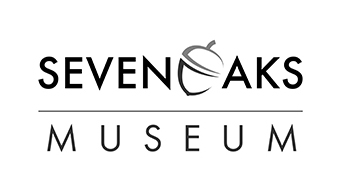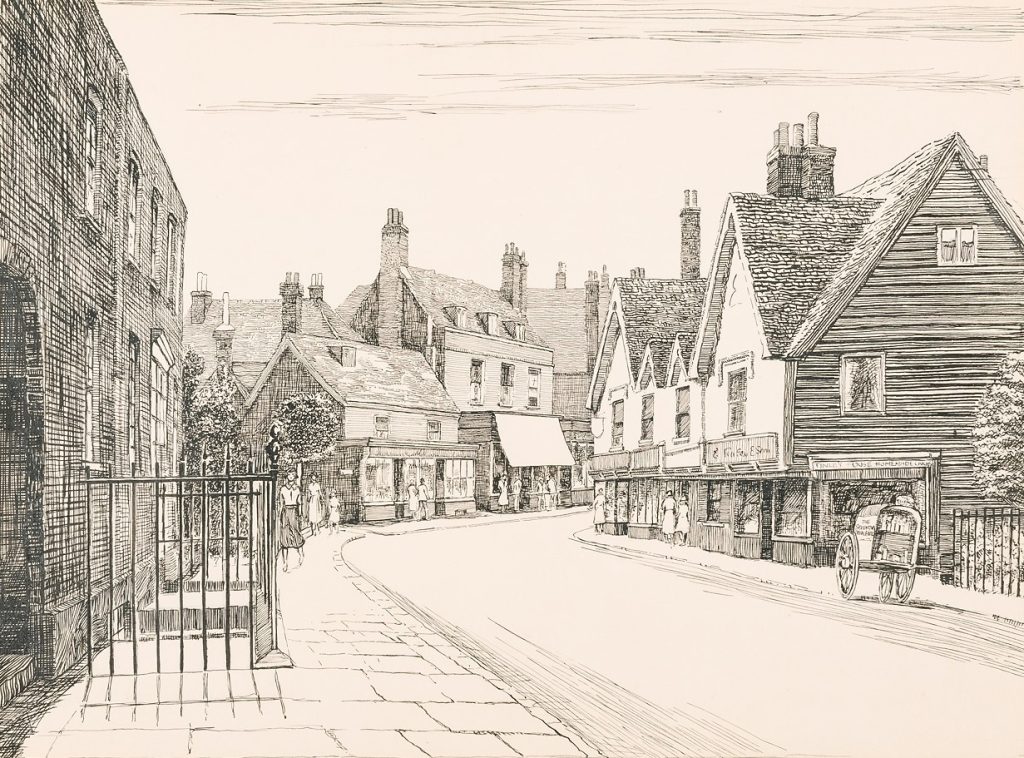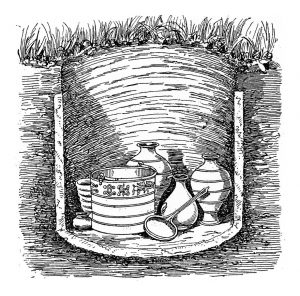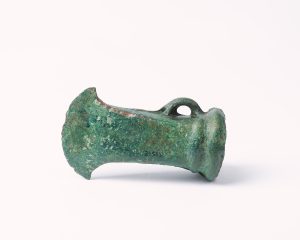Vincent New was born in Bromley. As a teenager, just after the First World War, he was sent to work on a farm in Australia, but as soon as he could he returned to England to pursue his creative ambitions.
New began studying at Bromley School of Art in 1925, whilst managing a seven-acre poultry farm in Otford to pay his tuition fees. In the evenings he would sketch views from around the farm. He went on to attend Beckenham and Camberwell art schools, finishing his studies in 1931.
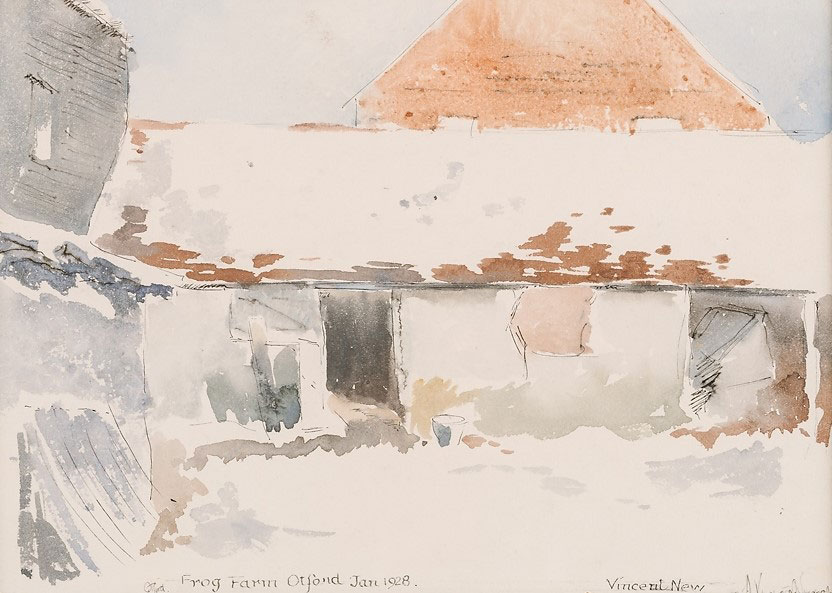
As a young freelance artist, New was commissioned to produce a series of drawings for The Sevenoaks Chronicle, depicting scenes from across the district. He had produced a similar series for The Bromley & Kentish Times the previous year. The paper introduced the series with a glowing review of his contribution to the Sevenoaks Arts and Crafts Society exhibition in 1932.
His ‘black and white work struck a particularly dominant note, showing that he was able by the methods which he has made all his own to capture the atmosphere and the spirit of the old world scenes he chooses for his subjects.’
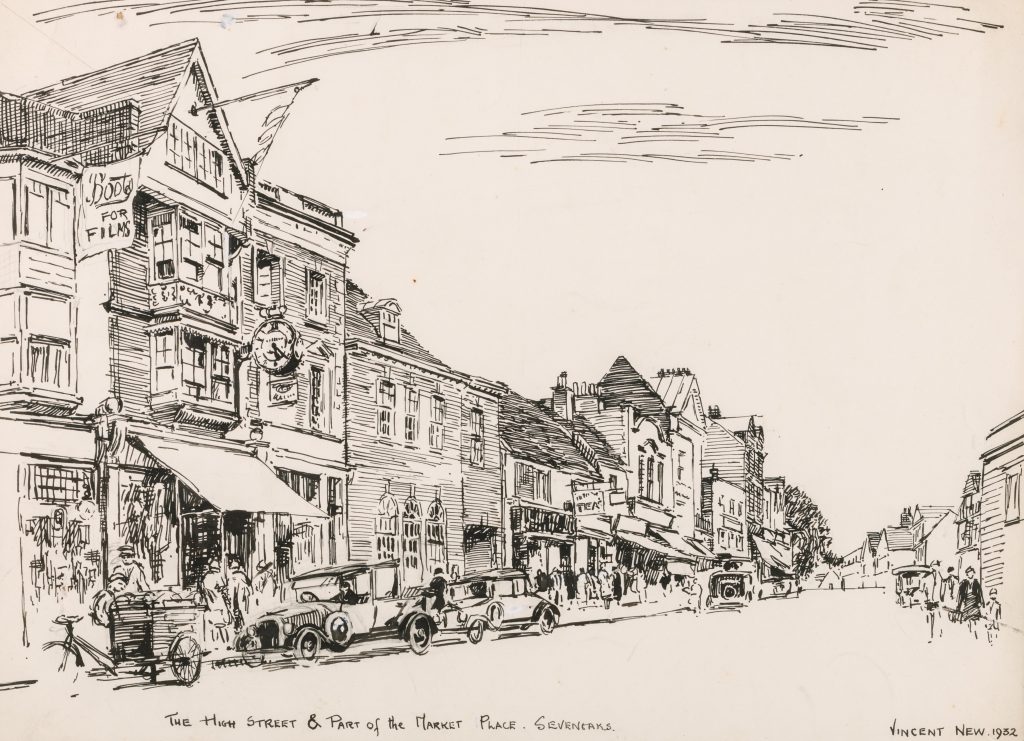
‘Liberal use of white spaces, the right placing of shadow patches and the fewest possible lines, contrives to give the impression of sunlight and colour, while his composition of the necessary figures suggests life and movement.’
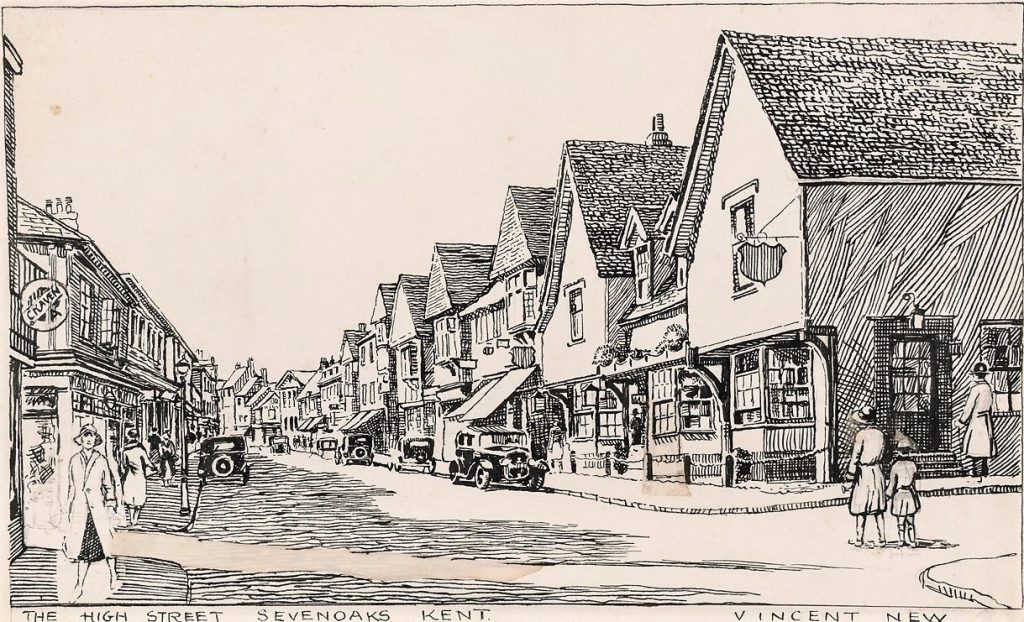
Harold Nelson, designer of the British Empire Exhibition postage stamps, wrote in a forward to a publication of New’s Bromley sketches, ‘Mr. New has exactly gauged the quality of his line to get the maximum of effect in reproduction’. He admired New’s ‘vivid way of handling buildings and his knack of suggesting the texture of tiled roofs’.
New also found work drafting and carving designs for Hyders, an art metal works in Plaxtol. The company produced a range of hand-forged wrought ironwork including balustrades, garden furniture, gates, railings and homeware.
In 1935 he purchased an Albion printing press for £24. The Albion is a hand press used for relief printing woodcut blocks, originating from the 19th century when it was used mainly for commercial book printing. New kept the press in his cottage living room in Brasted, and produced greetings cards and other products including a series of postcards featuring local landmarks.
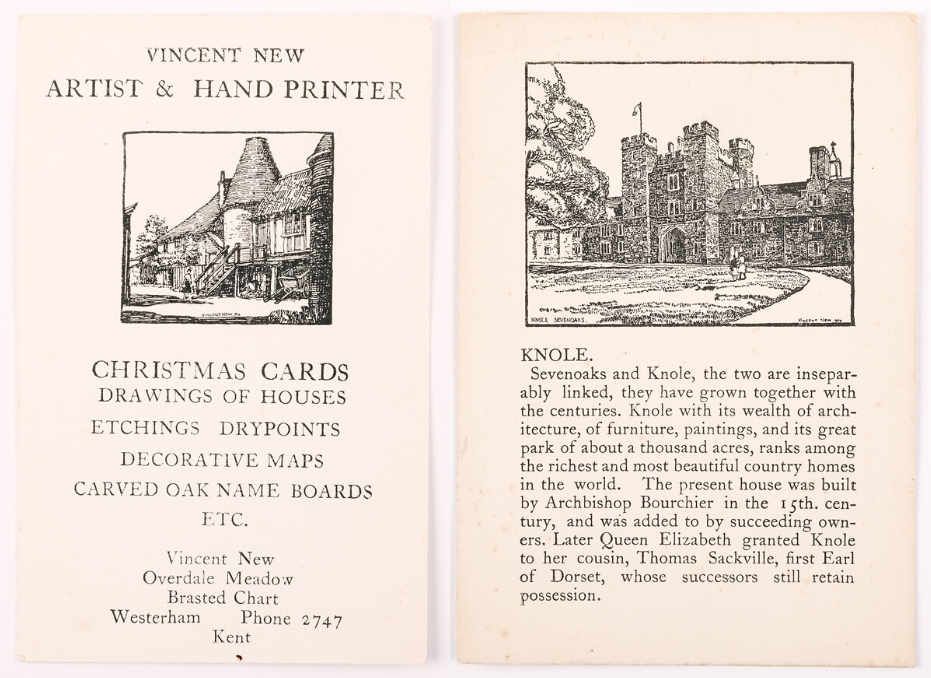
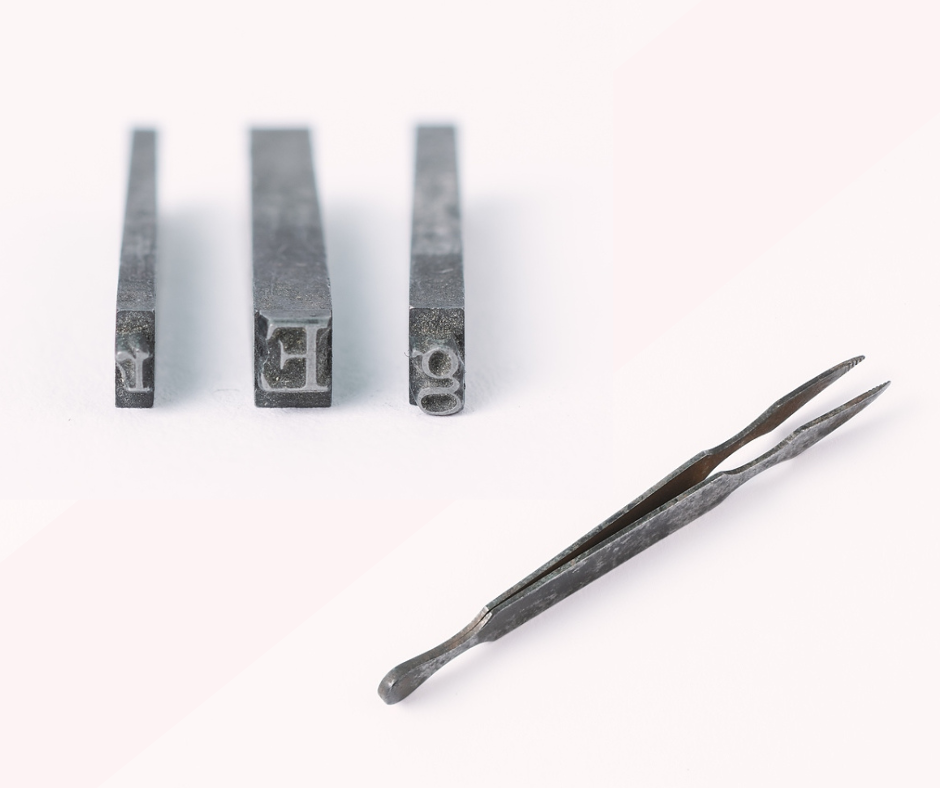
From 1943 to 1967 New had a job as an illustrator in the Admiralty’s Naval Intelligence Division, which included working on the Normandy invasion plans in 1944. His freelance work continued during this time.
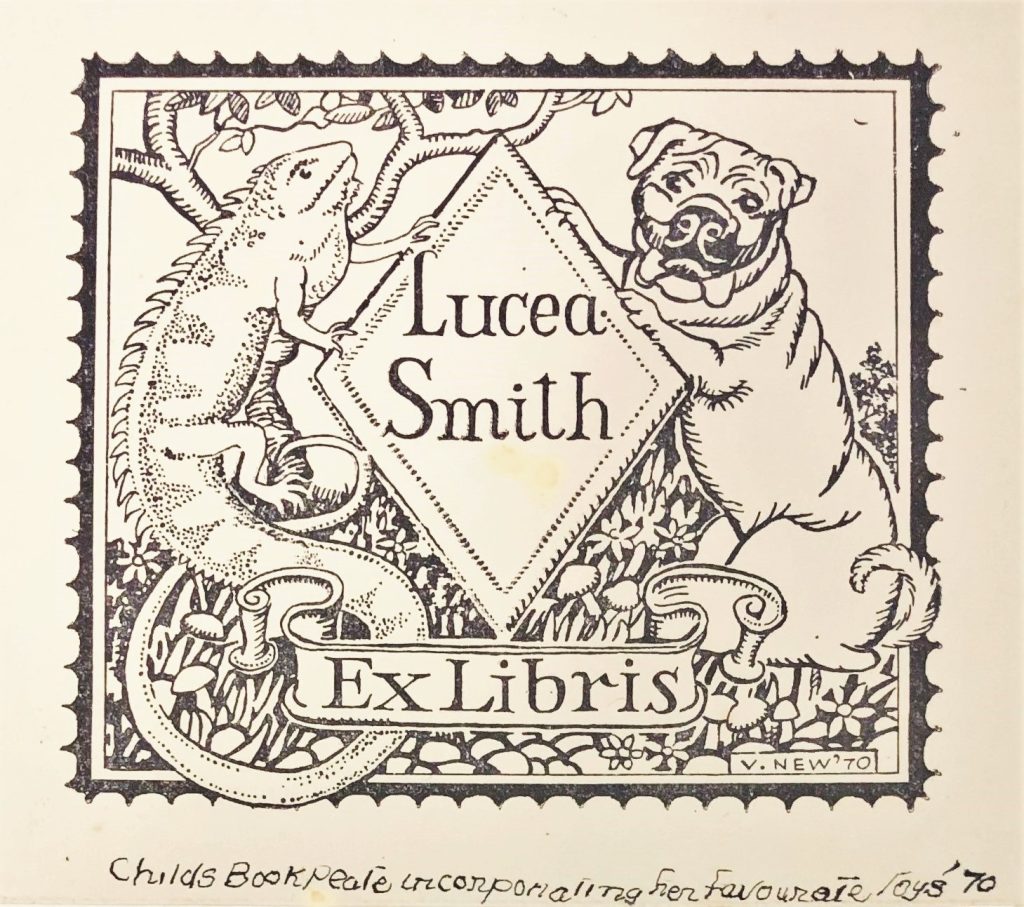
The Otford and Shoreham Sketchbook, published in 1992, features a selection of New’s drawings and watercolours with additional notes from the artist. The notes provide an insight into the creative process as well as the places depicted, with humorous historical and biographical titbits thrown in.
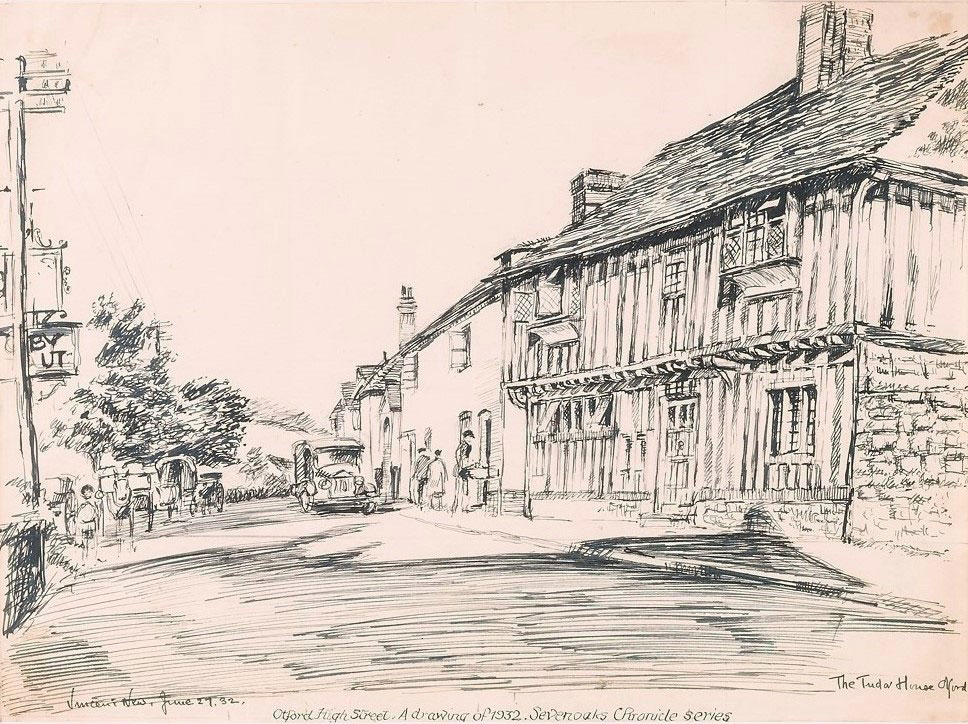
New comments on this 1932 study of Otford High Street, that ‘the changing way of life is illustrated by the horse and cart on one side of the road and the motor car on the other.’
The Tudor building in the foreground is Pickmoss cottage… ‘I remember the lady who lived at Pickmoss buying that adjacent cottage. It had been empty for some time and when she and her assistant went in there to sweep up they were suddenly attacked by masses of fleas, which had been lying around on the floor in wait.’
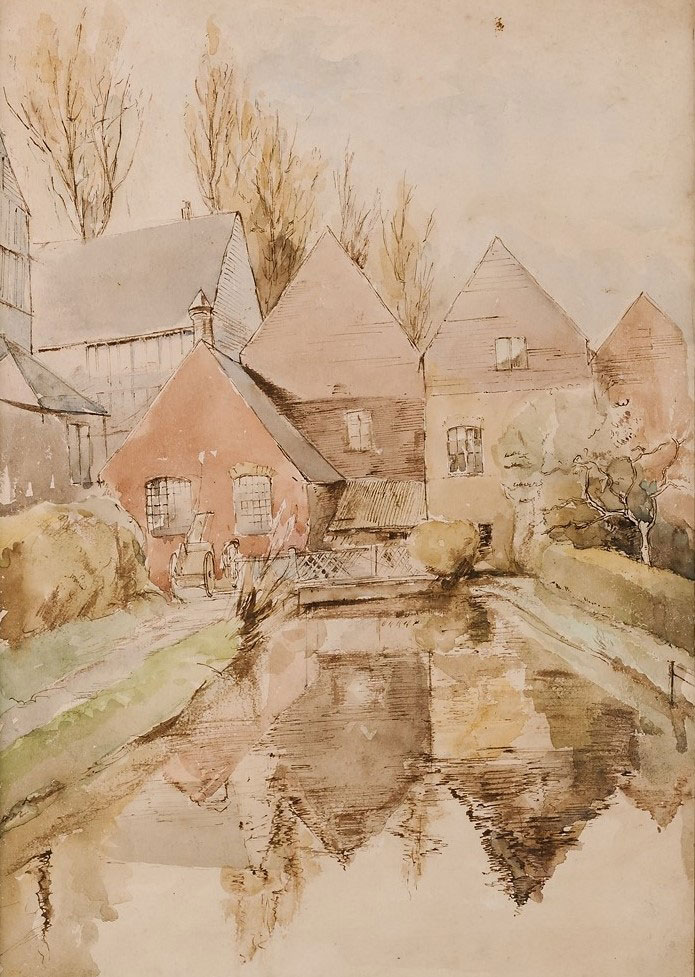
Referring to this watercolour sketch of the old Shoreham mill from 1928, he explains ‘The mill produced quality hand-made paper. Samuel Palmer used drawing paper from the mill. I got my hand-made paper from Hayle Mill, near Maidstone. I used to cycle down there and stock up.’ He mentions that the 19th century painter and printmaker was not an influence on him but they did visit the same locations in pursuit of their art.
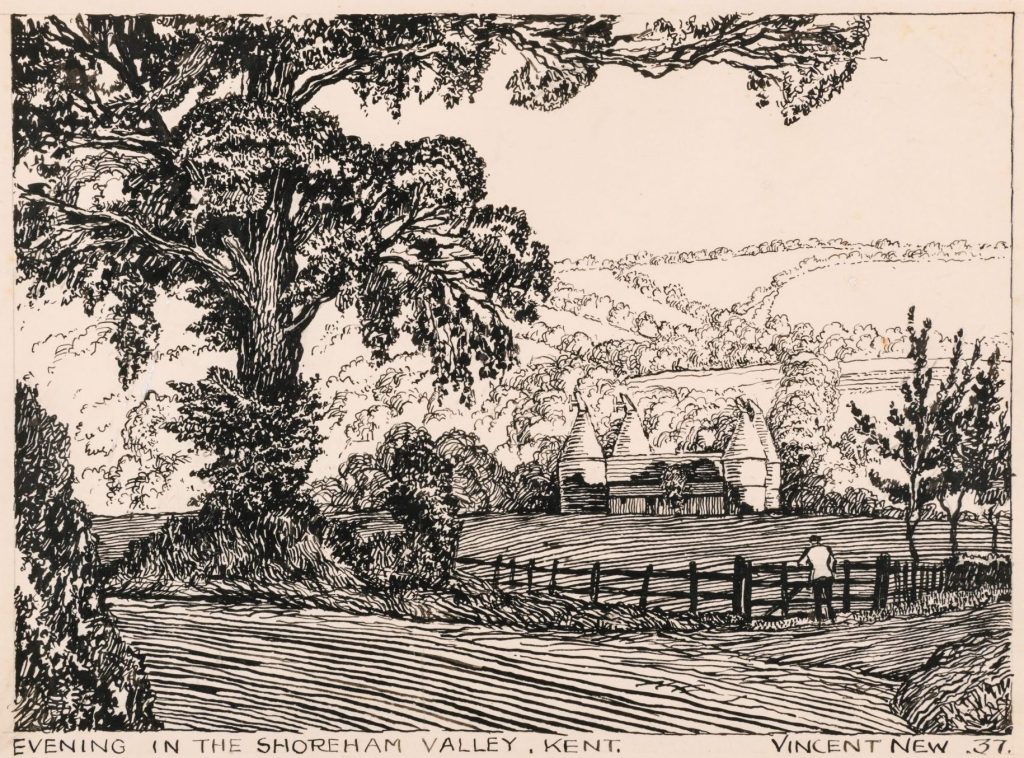
New began to transfer a large collection of his drawings, watercolours, prints and printing equipment to the museum in the late 1980s, so that it would be accessible to future generations. There is a copy of the Otford and Shoreham Sketchbook in the Sevenoaks reference library, and the Albion printing press is on permanent display by the computer suite on the lower floor of the building.
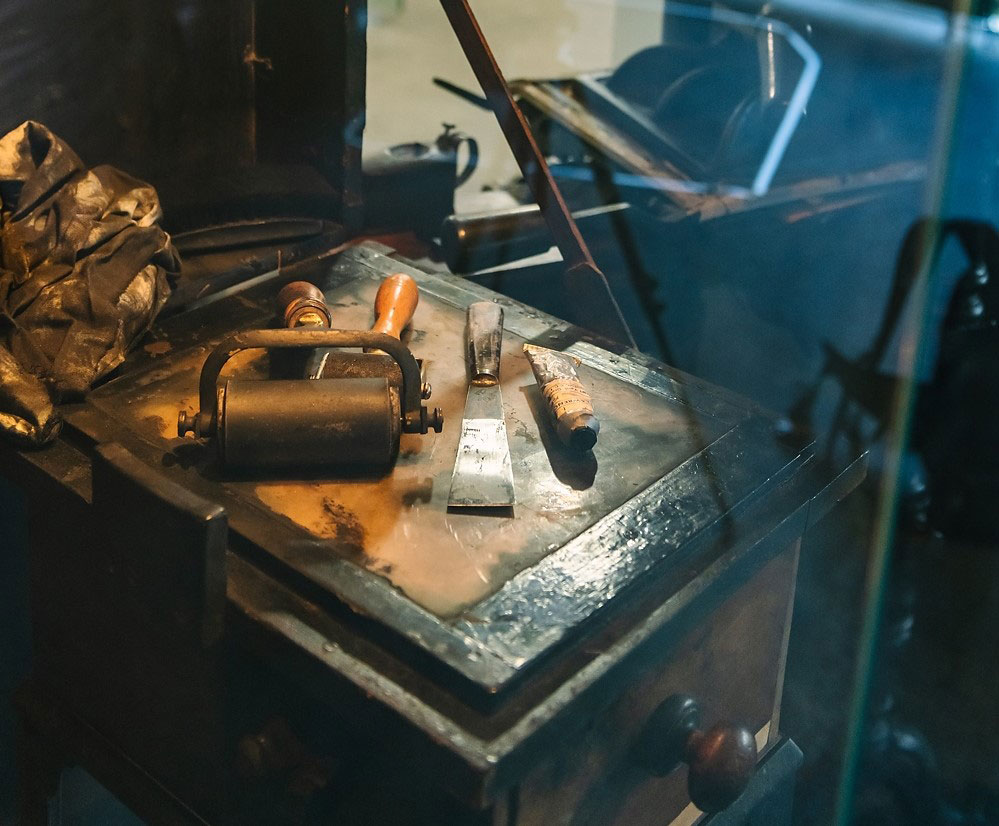
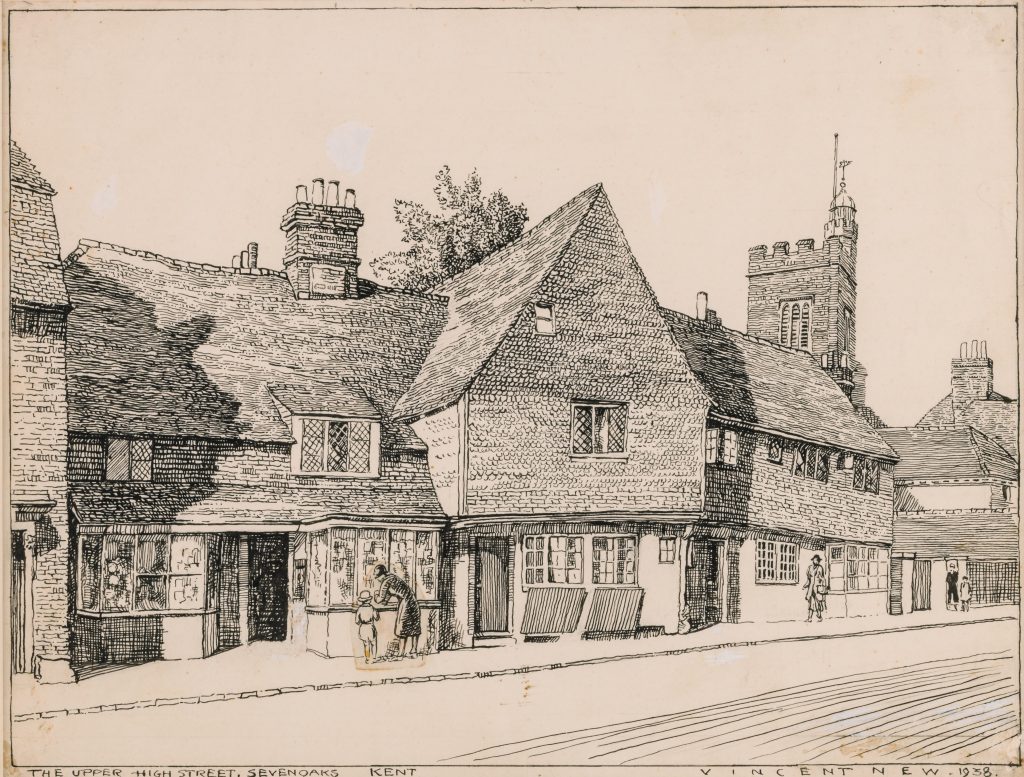
Written by Liz Botterill, Curator
